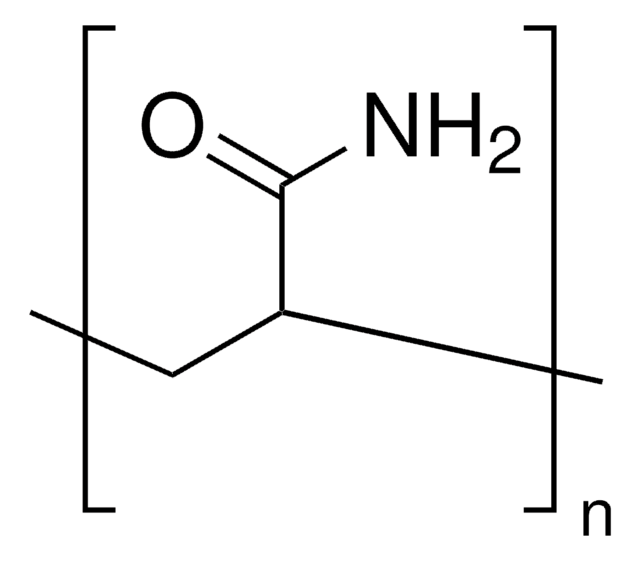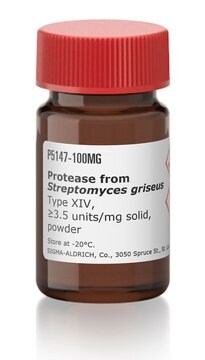181609
Polycaprolactone
average Mw ~65,000, average Mn ~42,500, pellets
Synonym(s):
2-Oxepanone homopolymer, 6-Caprolactone polymer
Sign Into View Organizational & Contract Pricing
All Photos(1)
About This Item
Linear Formula:
(C6H10O2)n
UNSPSC Code:
12162002
Recommended Products
form
pellets
melt index
1.9 g/10 min (80°C/0.3 Mpa)
mol wt
average Mn ~42,500
average Mw ~65,000
impact strength
82 J/m (Izod, ASTM D 256-73A, notched)
hardness
55 (Shore D, ASTM D 2240-75)
mp
60 °C (lit.)
elongation
2 in/min - 600-1000% (ultimate)
Looking for similar products? Visit Product Comparison Guide
Application
Extrusion aid, die lubricant, mold release, pigment and filler dispersion aid and polyester segments in urethanes and block polyesters.
Features and Benefits
Biodegradable polymer
Non-toxic, biodegradable in soil, broad miscibility, mechanical compatibility with many polymers and good adhesion to a broad spectrum of substrates.
Non-toxic, biodegradable in soil, broad miscibility, mechanical compatibility with many polymers and good adhesion to a broad spectrum of substrates.
Storage Class
11 - Combustible Solids
wgk_germany
WGK 3
flash_point_f
Not applicable
flash_point_c
Not applicable
ppe
Eyeshields, Gloves, type N95 (US)
Choose from one of the most recent versions:
Already Own This Product?
Find documentation for the products that you have recently purchased in the Document Library.
Wei Ching Low et al.
Biomaterials, 34(14), 3581-3590 (2013-02-19)
At present, the recovery prospect for patients with chronic neurodegenerative diseases or acute trauma in the central nervous system is sub-optimal. The controlled differentiation of neural stem/progenitor cells (NPCs) to functional neurons is a possible treatment strategy. In contrast to
Mi-Jin Kim et al.
Materials science & engineering. C, Materials for biological applications, 33(4), 2266-2272 (2013-03-19)
We synthesized poly(ε-caprolactone) (PCL)/hydroxyapatite (HA) composite microspheres with an aligned porous structure and evaluated their potential applications in bone tissue engineering. A range of HA particles (0, 5, 10 and 20 wt.% in relation to the PCL polymer) were added
Kalaipriya Madhaiyan et al.
International journal of pharmaceutics, 444(1-2), 70-76 (2013-02-02)
Biocompatible PCL polymer nanofiber mediated sustained release of hydrophilic drug and applicability as transdermal delivery system is attempted. This new attempt to investigate water soluble vitamin delivery with hydrophobic polymer nanofiber sustained the release of the vitamin and the method
P R Sreerekha et al.
Journal of biomedical nanotechnology, 9(5), 790-800 (2013-06-28)
Fabricating scaffolds mimicking the native extracellular matrix (ECM) in both structure and function is a key challenge in the field of tissue engineering. Previously we have demonstrated a novel electrospinnig method for the fabrication of fibrin nanofibers using Poly(vinyl alcohol)
Qingchun Zhang et al.
Materials science & engineering. C, Materials for biological applications, 33(4), 2094-2103 (2013-03-19)
The physical properties of tissue engineering scaffolds such as microstructures play important roles in controlling cellular behaviors and neotissue formation. Among them, the pore size stands out as a key determinant factor. In the present study, we aimed to fabricate
Our team of scientists has experience in all areas of research including Life Science, Material Science, Chemical Synthesis, Chromatography, Analytical and many others.
Contact Technical Service





